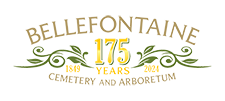From Horticulture Supervisor
Kyle N. Cheesborough

The great blue lobelia (Lobelia siphilitica) is a small, native, herbaceous perennial often found in woodland floodplains or bottomlands, or along streams and ponds in consistently moist soils. In a fall landscape dominated by yellow-flowering Silphium, Helianthus, and Solidago, the violet-blue flowers provide a splash of contrast well-received by most gardeners. Lobelia siphilitica requires moisture to grow and flower well, and will not tolerate drought.

Lobelia can tolerate full sun if given enough water, but more often shade to part shade conditions provide the best performance. Though short-lived, great blue lobelia can persist for years in a garden setting – given proper growing conditions – by freely seeding within the immediate vicinity of the parent plant. All parts of this plant are toxic, though large quantities must be consumed before feeling the nauseating affects, and this keeps herbivorous mammals from feeding on the foliage. The strange specific epithet (siphilitica) comes from the historical misconception that this plant was a cure for syphilis. Of the asters common to the garden, the heart-leaf aster may be the most overlooked and underappreciated. The numerous clusters of powder-blue, daisy-like flowers adorn the 2-3’, multi-branching perennial in fall, providing myriad pollinators with a late-season snack.

Silvery checkerspot and pearl crescent butterflies use Aster cordifolius as a host plant, as do a number of moth species. This native perennial is tolerant of poor, rocky, clay soils, and prefers a bit of shade throughout the day, though full sun is tolerated. Rabbits and deer will occasionally feed on the foliage of Aster cordifolius. The short, underground rhizomes help the heart-leaf aster to colonize small areas, creating thick displays of heart-shaped leaves and fall flowers. Heart-leaf aster is no show-stopper, but this perennial can serve as an excellent addition to woodland gardens or mixed-perennial borders.

Another welcome sight in the fall garden are the many fruits and berries that begin to color. For example, many holly species (Ilex spp) form their bright-red berries in fall, often holding them through the winter. Native holly species and their cultivars, like Ilex verticillata ‘Nana’, are typically deciduous, revealing stunning displays of scarlet fruit clustered along the silver-gray branches. Evergreen species, like Ilex ‘Mesog’ (China Girl holly), also develop berries in fall; the striking contrast between the brilliant red fruit and the deep, glossy-green leaves is a head-turner in the garden, especially during the drab winter months. Hollies are very tough in the garden, many being drought tolerant, full-sun loving plants with few disease issues. The gardener must remember that hollies are dioecious, meaning there are separate male and female plants. If berry production is desired, the savvy gardener will be sure to include at least one male holly in a 1,000 sq ft area, to pollinate nearby female hollies. Cluster the male amongst the females, so that the lack of fruit is less noticeable.
Our native hollies, Ilex verticillata and Ilex decidua, provide a buffet of fruit into the winter months for a number of birds and mammals, though these tend to be larger shrubs to 15 feet. Smaller, compact cultivars of these native species are available. The exotic, evergreen hollies abound, with no shortage of shapes, sizes, and berry production. China Girl hollies are dotted throughout Wildwood Valley at Bellefontaine Cemetery, providing winter interest and an evergreen layer.

compiled by Cara L. Crocker

Post a comment